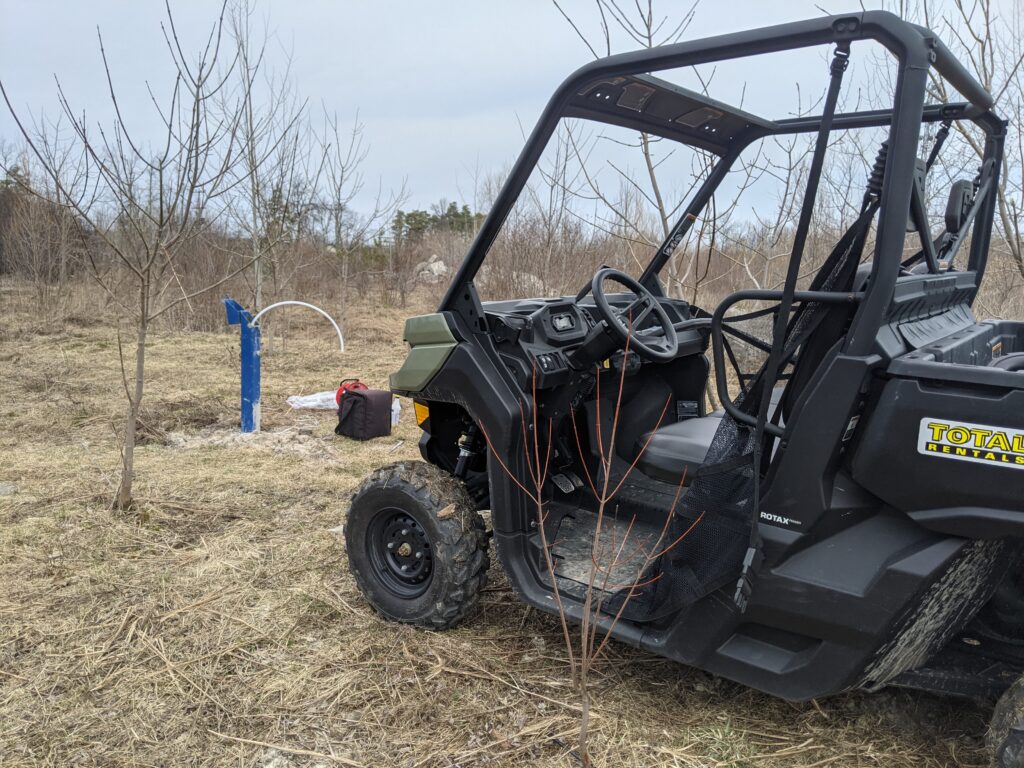Generally, a site is considered inaccessible not because of the lack of street access but because the terrain is unmanageable for the average vehicle. Oftentimes there are debris left over from previous structures or industrial uses that can become covered with vegetation as time passes. Not only are these types of sites dangerous to road vehicles but they are also dangerous for field technicians conducting any kind of environmental sampling.

Utility vehicles (UTVs) are specially designed for rough and uneven terrain with standard four-wheel drive and low centre of gravity. They have a durable cargo box with capacities starting at 450kg (1000lb), as well as the option to tow a trailer. The operator and passenger are kept safe with seatbelts and a roll cage, but it is strongly recommended that both wear head protection.
Groundwater sampling equipment typically includes a pump, a large battery, a geochemistry detector, sample bottles, a cooler, miscellaneous tools and consumables like tubing. Carrying this equipment between sampling locations, over uneven ground, can be a time consuming and dangerous process. Use of a UTV nearly eliminates a site’s tripping hazards as technicians can load the bed of the vehicle and drive the equipment to the next location. The UTV can also save hours or days of fieldwork, depending on the scale of the project, by providing fast transport over long distances where multiple trips would instead be needed.
UTVs are useful in many niche situations as well, like when training a technician at an inaccessible site. The trainee maybe working independently at one sample location while the trainer is working at another. If the trainee runs into an impediment while sampling the trainer can use the UTV to reach them for assistance in a fraction of the time.
Technicians are excellent problem solvers in the field; using a UTV provides them with another tool in their toolbelt to keep the project running safely and smoothly.






